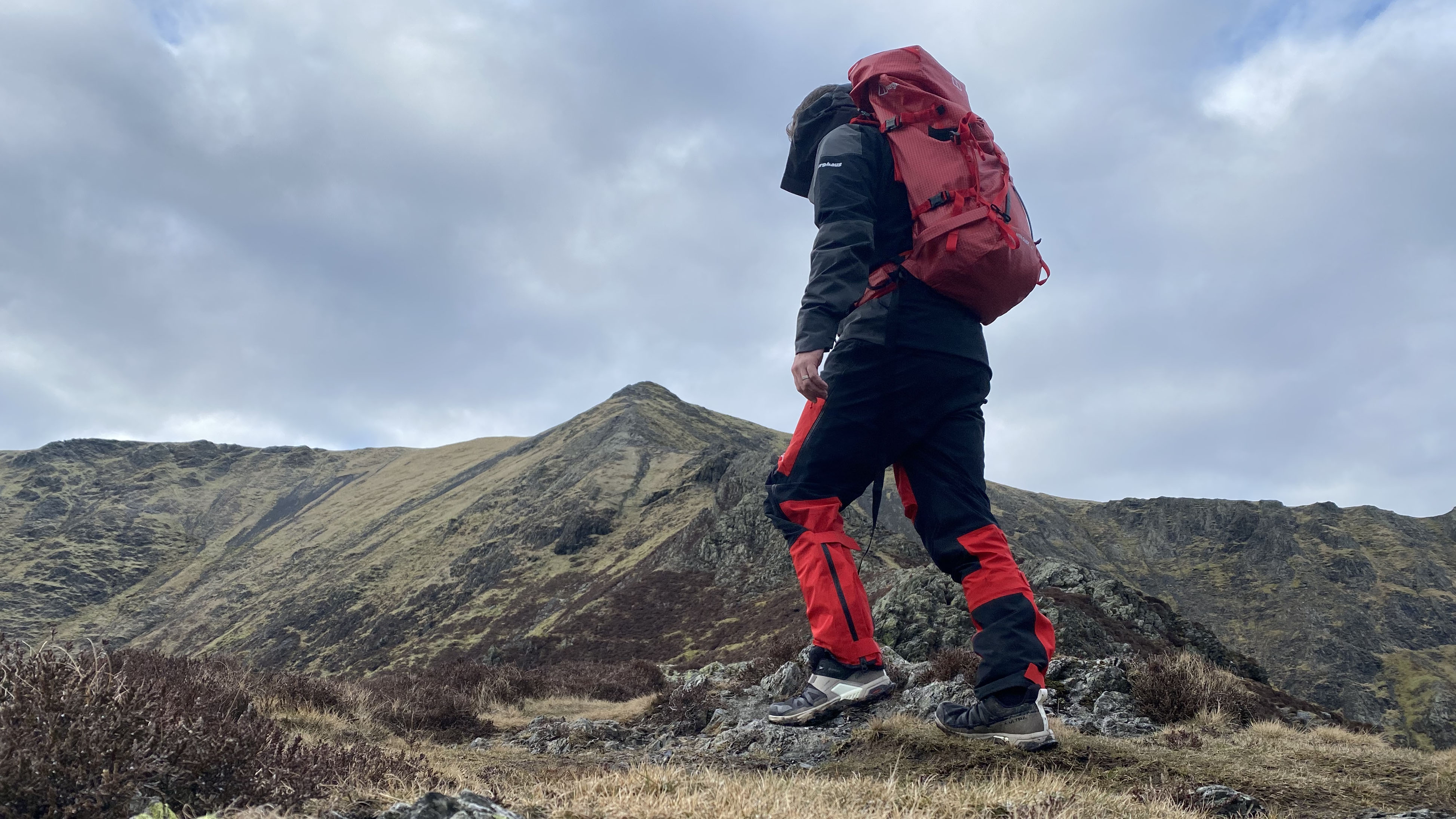
A mainstay on Britain’s trails, Northern English brand Berghaus have a solid reputation for their quality, functional outdoor kit. Their range of products contains everything from entry-level hiking gear right the way up to its Extrem range, which consists of premium, high-performance clothing and equipment that's designed for mountain professionals and winter mountaineers.
Down the years, this kit has been tested and developed by some of British mountaineering’s leading lights, such as adventure climber Leo Houlding and exploratory Himalayan climber Mick Fowler. The range received a fresh injection of new blood (a particularly apt description given the vivid red colorways on show) in late 2022 and I was stoked to get my hands on some of the key pieces.
Two of the flagship products in the ‘Guide’ pillar (products designed for mountain pros) of the Extrem range include the MTN Guide GTX Pro Jacket and the matching overtrousers: the MTN Guide GTX Pro Pant. Both boast a premium polyamide fabric featuring 70 denier Gore-Tex Pro 3L Most Rugged and strategically placed Gore-Tex Pro Stretch 70 denier panels. In other words, both should be highly effective, waterproof shields against the kind of brutal conditions you can get in the winter mountains.
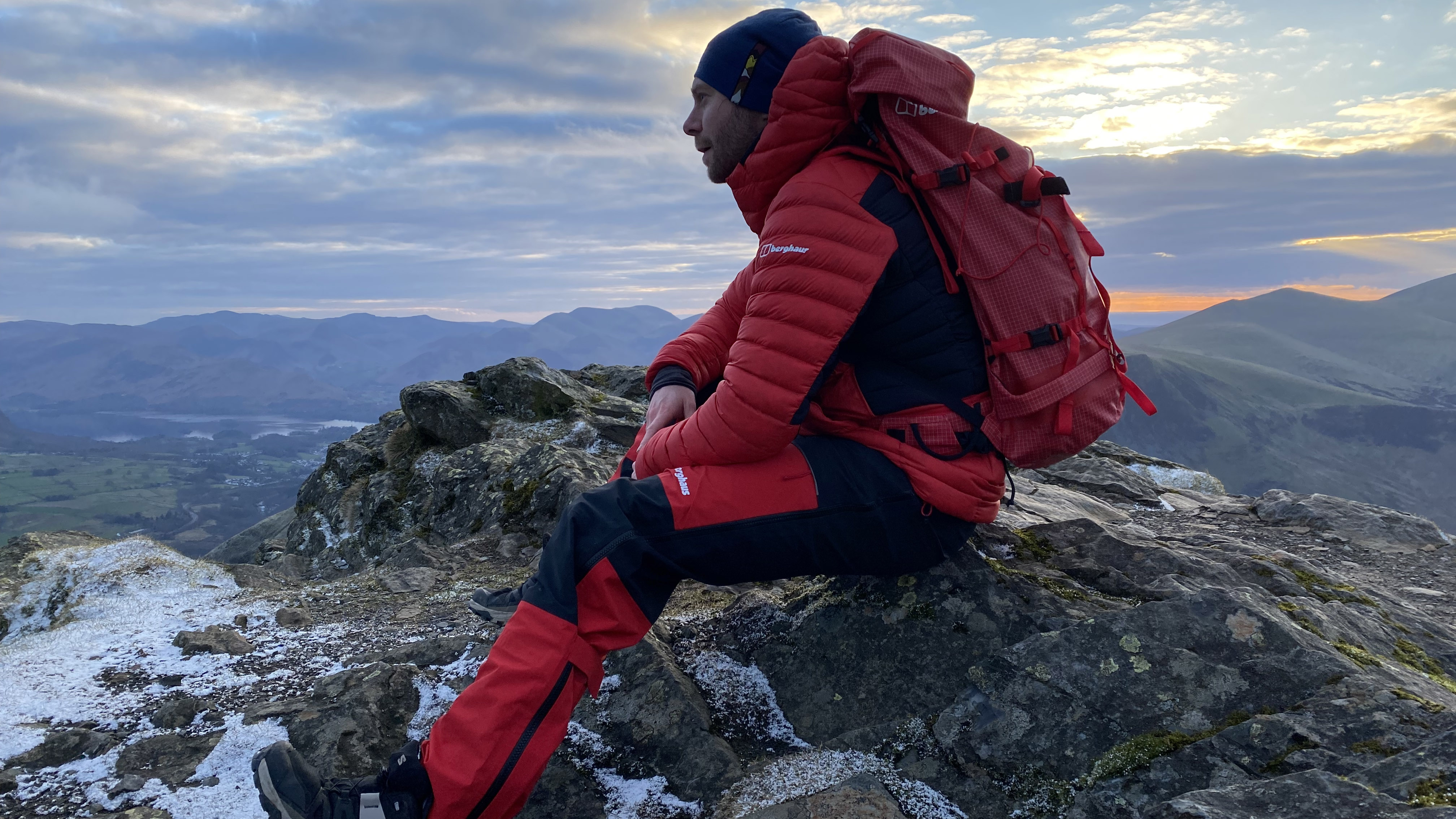
So, it’s fair to say the Pro Pants are more than simply a pair of hiking pants, which is a good thing too considering they’ll set you back about three times as much as a standard pair of quality outdoor trousers.
Berghaus MTN Guide GTX Pro Pant: first impressions
Bold and bright, with their vivid red face fabrics, large zippers and chunky poppers, there’s nothing subtle about the Pro Pant. Then again, the last thing I’d want in a blizzard is subtlety when it comes to manipulating garments with hiking gloves on – so this is a good thing. On first wear, they feel reassuringly rugged, though the fit feels pretty generous at first, particularly towards the lower leg.
This is because the Pro Pants are primarily overtrousers, rain pants that are designed to be fitted over an insulated pair. So, there has to be a bit of room underneath. It’s the same scenario as a waterproof jacket worn over a mid-layer or down jacket. More layers equals more warmth.
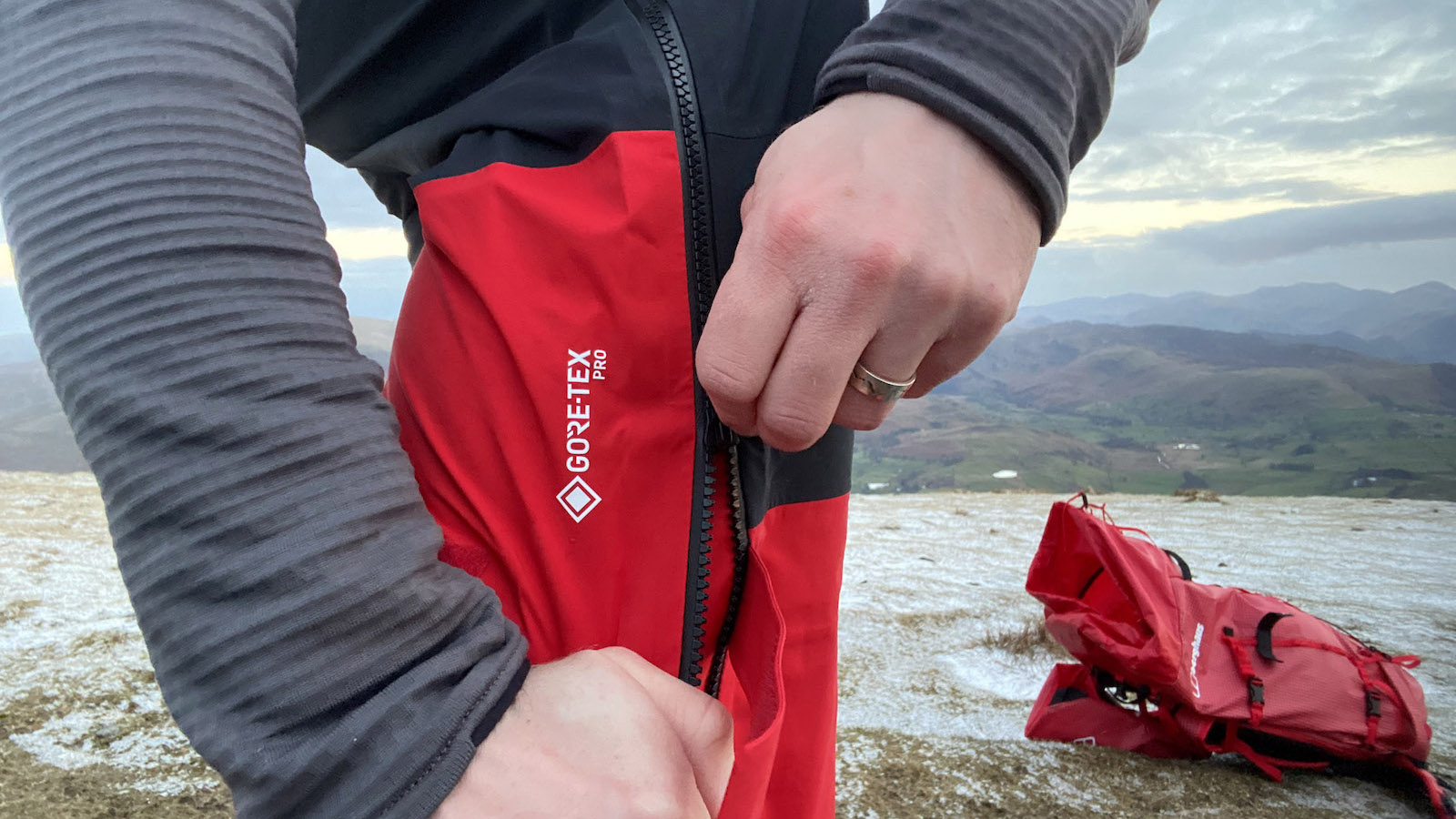
They also come up quite high at the waist which, when combined with the below-the-bottom low fit of the Pro Jacket, means that you get plenty of protection around your middle region.
Closer inspection reveals a raft of features that your standard overtrousers can’t match. So, let’s get into them…
A premium feature set
As mentioned, when I first put the Pro Pant on, they gave quite a generous fit, especially lower down, where they’re almost baggy. I’ve snagged a crampon on ill-fitting trousers before and it’s not something you want happening high up on a narrow, snowy arête. However, unlike with a standard pair of overtrousers, there are plenty of ways to adjust the Pro Pants in order to achieve the desired fit.
Robust Velcro tabs at the ankle and the calf allow you to tighten everything up, while the nicely elasticated waistband features belt loops and is designed for compatibility with braces.
Like the Pro Jacket, the trousers combine two leading Gore-Tex Pro technologies: Most Rugged and Stretch. The strategically placed Stretch panels provide the necessary freedom of movement, while still providing high levels of durability and protection. Meanwhile, Most Rugged is hugely hard-wearing and resistant to snags and rock abrasion. If the Pro Pant was a tank, the Stretch would be the capapillar wheels, while the Most Rugged would be the reactive armour.
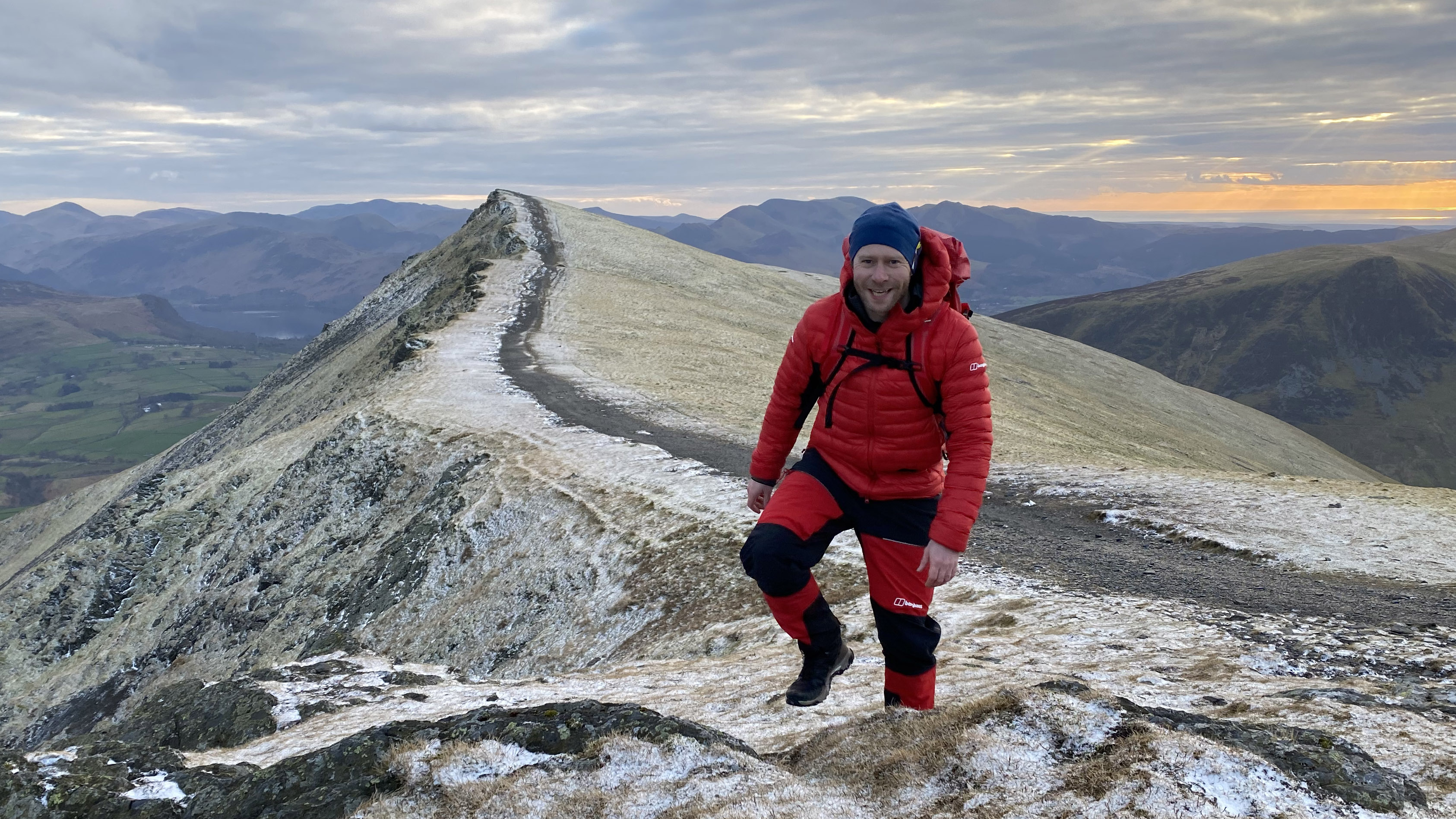
As mountaineering pants, the Pros are designed to be worn with a climbing harness, which is why the waistband has a low profile. It’s also why the large thigh pockets are placed lower down than on a standard pair of pants. With just about enough volume to take a topographical map, there’s plenty of additional storage here.
Running the length of either side of the Pro Pants are 2-way, fully opening side zips. This makes it easy to put the trousers on or take them off, even when wearing mountaineering boots or similar.
A really neat feature is the internal gaiter, which is hidden beneath the main fabric on the lower leg. The bottom is elasticated, while there’s a lace hook for attachment to a winter hiking boot or similar. The ankle also features a kick patch for increased protection, something that will please snow sports enthusiasts.

Of course, all these features and the quality of the Pro Pants’ components add up to give them the very high price point. If you’re after standard rain pants for hiking exploits, the Berghaus’ Deluge 2.0 overtrousers do the job at a fraction of the price.
On test
To test the Pro Pant, I coupled it with the GTX Pro Jacket and other items from the Extrem range (such as the MTN Guide MW Hoody) and headed for the mountains of the English Lake District. The last tendrils of winter were giving way to early spring but I was still able to pit the Pro Pants against freezing conditions, rain, thunderous hail and strong winds.
I felt almost bulletproof throughout, with the Pro Jacket and Pro Pants swatting away any bad weather and keeping me well protected from the wind too. On the chillier hikes, I paired the Pants with my insulated trousers. When it was warmer, I employed them as a standalone pair and found them to be perfectly comfortable when worn in this way.

For such rugged trousers, the freedom of movement they provide is a real strength. I indulged in some tricky scrambling, with some interesting foot placements at times. Now, I’m no gymnast or yoga expert, but for my range of motion, the Pro Pants were never inhibitive. Clearly the GTX Pro Stretch panels and the articulated design do their job.
As mentioned, there’s nothing subtle about the size of the Pro Pants' poppers, Velcro tabs and zippers and I found accessing pockets, adjusting the fit and access and egress easy, even when wearing gloved hands.
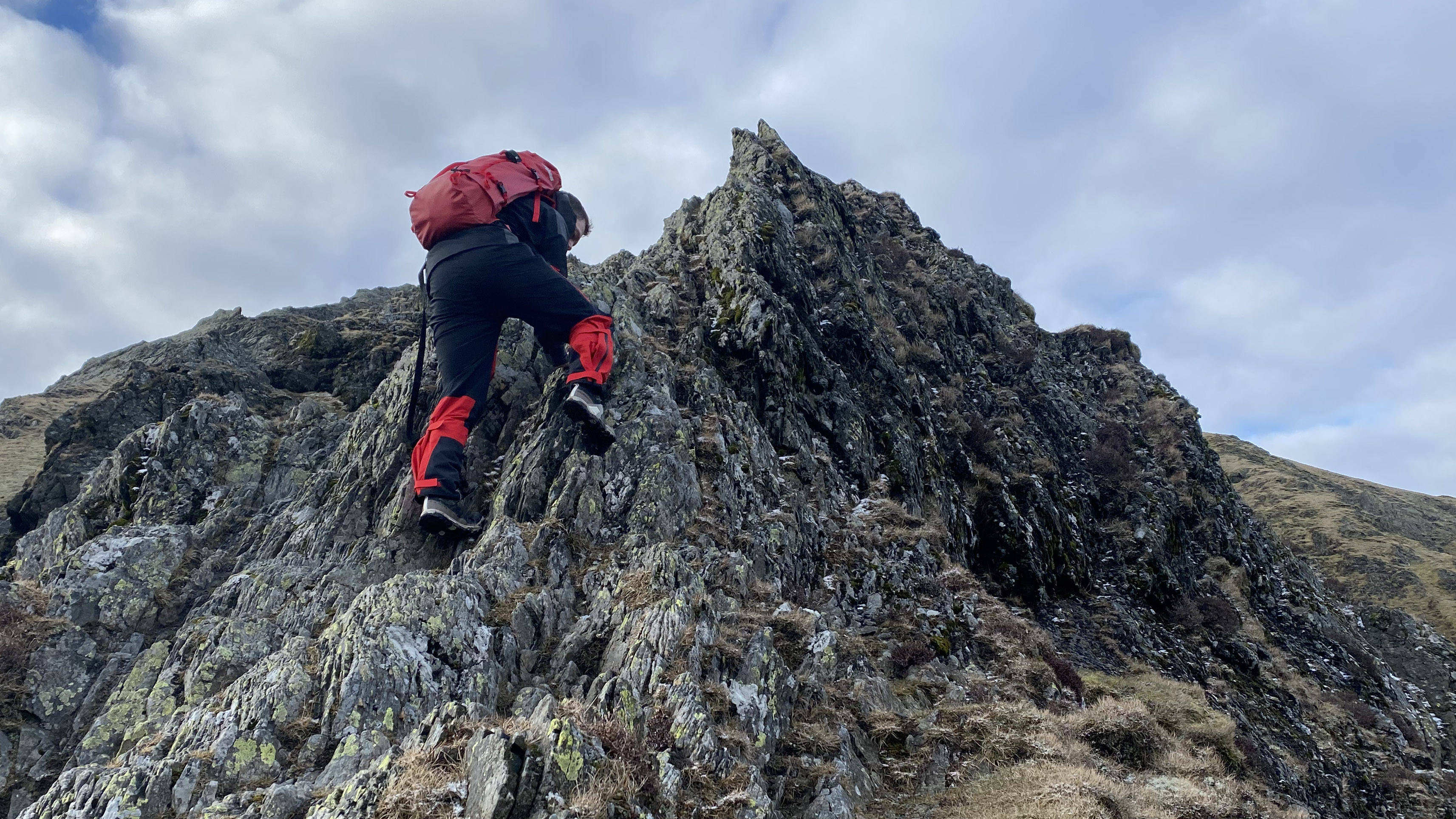
Admittedly, I’m yet to test the Pro Pant in truly gnarly conditions and am looking forward to wearing them in places like the Alps and Scotland in winter. The Lake District did have the usual rain, freezing temperatures, volleys of hail and chilling winds to throw at them but these were all repelled with relative ease.







